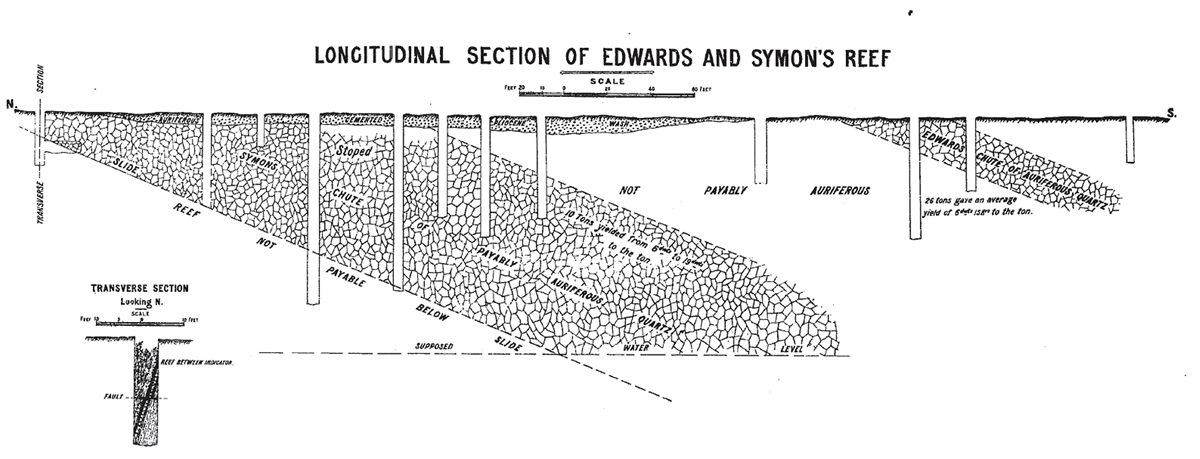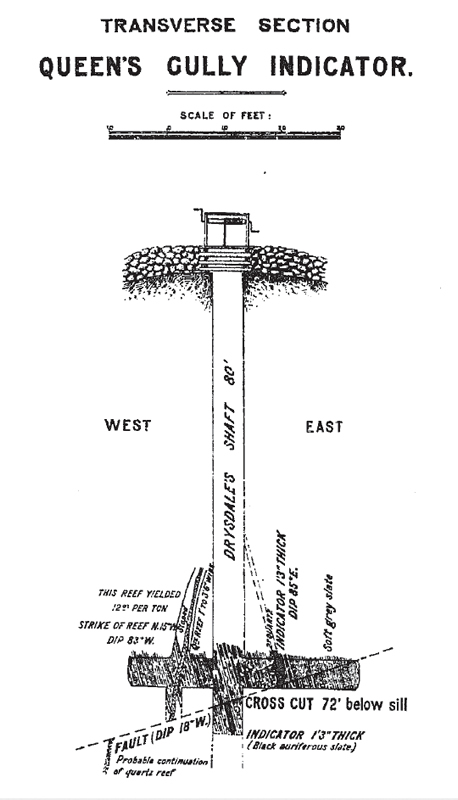WEDDERBURN & MINING HISTORY
Wedderburn is 189 m above sea level in forest and open farmland 214 km NW of Melbourne and 74 km East of Bendigo. Prior to European settlement, the area was occupied by the Dja Dja Wurrung. Wedderburn is a small country town on the Calder Highway, about two and a half hours drive north-west of Melbourne (about 214 kilometres). The population is approximately 600 and the region’s economy is characterised by agricultural production, with most of the local labour force employed in this industry. Medical care is provided by a doctor four days per week – a major hospital is located in nearby Bendigo. The community is serviced by Wedderburn College (Prep to Year 12).
First Victorian Gold Discovery
Victoria’s first officially recognised gold discovery was in 1850 near Clunes, almost 40 kilometres north of Ballarat. In 1851, the Victorian Government offered a reward of £200 to anyone finding gold within 200 miles (320 kilometres) of Melbourne. Within six months, gold was discovered in Ballarat, Castlemaine and Bendigo.
The gold discovery at Ballarat in 1851 sparked Victoria’s famous gold rush. An estimated 6000 diggers (miners) arrived each week seeking their fortune. Ballarat was considered the world’s richest alluvial goldfield during its peak between 1852 and 1853. The Victorian gold rush accounted for over one-third of the world’s gold production in the 1850s.
Gold Mining Boom
As surface alluvial gold ran out, miners looked underground. So-called deep leads were discovered, which were gold-bearing watercourses
buried at various depths by millions of years of erosion and volcanic action. As they too were exhausted, attention turned to the mining of quartz reefs, which continued across the state until WW1.
Places such as Bendigo and Ballarat saw great concentrations of miners, who were forming partnerships and syndicates to enable them to sink ever-deeper shafts. The Bendigo goldfield commenced in 1851 and continued over the next 153 years through times of boom, decline, revival and stagnation. The Bendigo Goldfield represents the largest concentration of deep shafts anywhere in the world and at today’s prices, produced nine-billion dollars worth of gold.
The Rush to Wedderburn
Gold was first discovered at Wedderburn by a shepherd named Brady in 1852. The field was first known as Korong or Mount Korong. Quartz mining quickly followed the discovery of alluvial gold, and the first public crushing plant was erected in 1859. The Wedderburn township was surveyed in 1856/57, and allotment sales began in 1858. The town is likely named after William Wedderburn, an officer who served in the Goldfields Mounted Police.
During the peak of the gold rush, some 6,000–7,000 gold prospectors were in the area. This number dwindled quickly because of the lack of water for mining, the lack of funds for prospecting, and the discovery of other nearby goldfields.
The Geological Survey of Victoria in 1911 concluded: “I am convinced large amounts of gold remain above the [ground] water level… there are scores of outcropping indicators on which a shaft has never been sunk. I have no doubt the surface auriferous features will be found repeated below [ground] water level… the failure has been due more to the want of funds than to the productiveness of the reefs.”
The field has a rich alluvial gold nugget endowment, producing 150,000 oz of gold, with a modest amount produced underground.
Alluvial – Deep Lead – Quartz
By 1860 the population of Victoria exceeded 500,000 and constituted nearly half of the Australian total. Smaller gold rushes continued into the 1860s and 70s, as prospectors opened new alluvial ground across western Victoria, including fields at Ararat, Stawell, Kingower, Tarnagulla, Ingleburn and Wedderburn.
Many fields followed the path from alluvial to deep lead, and then quartz mining was pioneered in Ballarat and Bendigo. Some goldfields attracted thousands of miners who departed as quickly as they’d rushed onto the ground. By 1875 the lack of water and capital, the cost of pumping groundwater and new rushes in WA and Qld ended the life of many Victorian goldfields like Wedderburn as quickly as they’d been established.
Little Modern Exploration
The Wedderburn area is presently very popular with metal detector operators. Many shallow underground quartz lode mines exist on the Tenement, and many auriferous reefs exist divided into Western and Central clusters with multiple kilometre strike lengths.
But, until Wedderburn Goldfield’s exploration program began last year, there had been very little modern exploration. Only limited drilling had taken place, with as few as 89 shallow holes – only three deeper than 60 metres. The ground is noted as heavily faulted, creating an excellent opportunity for gold exploration in faulted voids. The region features excellent infrastructure and access to services.
WEDDERBURN – HOT AND COLD
- May 1852: Gold first discovered at Welshman’s Point, Golden Gully, Wedderburn by a shepherd named Brady.
- December 1852: 6,000 to 7,000 men on the field – alluvial gold.
- June 1853: Less than 100 men remain on the field due to the want of water for mining. First quartz miners sink a round shaft.
- June 1855: heavy rains attract 800 men to the field. No new ground was discovered. Population drops to 400 men.
- November 1855: “Smith’s Patch” opened – alluvial gold – every man on the field is on payable ground.
- December 1855: Unusually rich gullies and flats attract a large population again – numerous new gullies discovered.
- December 1856: Lack of funds causes most mines to close prematurely.
- May 1859: First public crushing plant located at Steel’s Gully.
- Public company development of quartz reefs below water level was retarded by lack of success.
- Gravels have been very productive of alluvial gold, though the large amount taken from Wedderburn was not accurately recorded.
- 22 large nuggets were recorded between 1853 and 1889. They ranged in colour from blue to black and from 1,400 to 9,525 grams. Total weight: 67,358 grams. Today’s price: A$5,255,944.
- The Wedderburn beds “have been faulted and fissured to a remarkable degree.”
- “Unfortunately, it very frequently occurs in these mines, that, when gold is lost, prospecting carries on a very disorganised way.”
- December 1905: “…probably not more than half-a-dozen legitimate reef prospectors remain on the field.”
- “Public mining companies have operated on reefs in the district, but in no one instance has work been profitable and their funds have not lasted long enough to allow stone to be cut.”
- “I am convinced large amounts of gold remain above [ground] water level… there are scores of outcropping indicators at the source of rich alluvial gullies on which a shaft has never been sunk.”
O. A. L. Whitelaw,
The Wedderburn Goldfield, Geological Survey of Victoria, 1905


